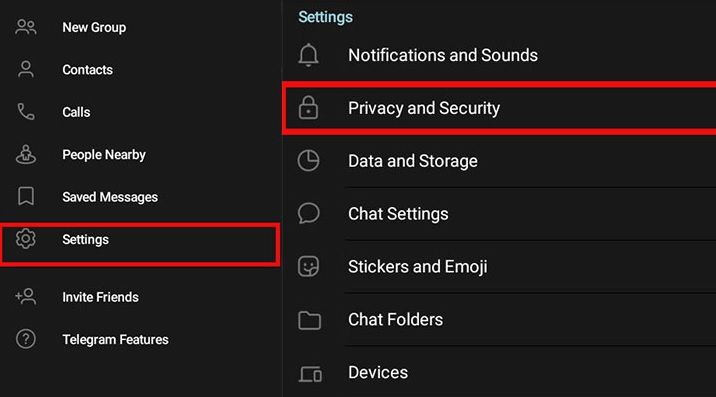In today’s digital age, messaging platforms like Telegram have become hotspots for communication. Unfortunately, this rise in popularity also attracts scammers looking to exploit unsuspecting users. In this article, we will explore all 12 common types of Telegram scams, how to identify them, and essential tips for avoiding falling victim to these fraudulent schemes. Always stay informed to protect yourself!
1. Introduction to Telegram Scams
Telegram has emerged as one of the leading messaging platforms, boasting over 700 million active users worldwide. Its focus on privacy, user-friendly interface, and advanced features such as channels, bots, and groups have made it a favorite among various user demographics, including individuals, businesses, and even political groups.
1.1. Can You Get Scammed on Telegram?
Yes, you can get scammed on Telegram. The platform’s structure allows for significant anonymity, which scammers exploit to create deceptive accounts and engage in various fraudulent activities. While Telegram boasts a robust suite of privacy features, these very elements can also empower malicious actors to operate with minimal accountability.
Users can easily fall victim to Telegram scams in several ways: scammers may set up fake profiles, send unsolicited direct messages, or establish fraudulent group chats. The repercussions of being scammed on Telegram can be grave, resulting in identity theft or even financial losses. Therefore, it’s important to stay alert and educated about the different forms of Telegram scams prevalent on the platform.

1.2. Why Telegram?
The popularity of Telegram stems from its unique features that differentiate it from other messaging platforms like WhatsApp or Facebook Messenger. Here are some reasons why Telegram is a favored platform, along with the associated risks:
- End-to-End Encryption: Telegram offers a feature called Secret Chats, which provides end-to-end encryption for messages, making it more secure than many other platforms. However, while this feature protects user privacy, it also allows scammers to operate undetected, as their communications are encrypted.
- Anonymous Usage: Users can create accounts without linking their real names or phone numbers, granting them a degree of anonymity. While this is beneficial for privacy, it also makes it easier for scammers to hide their identities and avoid detection.
- Bots and Automation: Telegram supports the creation of bots that can automate tasks and provide services. Unfortunately, some scammers create fake bots that promise to deliver goods or services but ultimately just steal users’ money or data.
- Large Group Chats and Channels: Telegram allows the creation of large groups and channels, which can reach thousands of users. Scammers often use these platforms to disseminate misleading information, promote scams, or conduct phishing attacks, all while appearing credible due to the number of followers or participants.
- High Engagement: With the rise of cryptocurrency and online investments, Telegram has become a popular platform for discussions about trading and investments. This creates an opportunity for scammers to target vulnerable individuals seeking financial gains, leveraging the fear of missing out (FOMO) to encourage hasty decisions.
- Read more: What is FOMO in Trading & How to Avoid? | Beginner’s Guide
Overall, while Telegram offers valuable communication tools and privacy features, its vulnerabilities can expose users to various Telegram scams. Understanding why scammers are drawn to the platform and the tactics they employ is crucial for safeguarding personal information and finances.
2. 12 Common Types of Telegram Scams
With Telegram’s explosive user base, scammers have developed sophisticated ways to exploit its users. These Telegram scams come in various forms, each targeting different vulnerabilities. Below are 12 common types of Telegram scams you might encounter on the platform:
2.1. Fake Job Offers
Fake job offer scams on Telegram have become increasingly common, preying on individuals searching for work or looking for additional income. Scammers create bogus job postings or approach users directly with attractive job offers that require little to no experience.
- How it works: Scammers reach out through social networks like Facebook, LinkedIn, or direct messages, claiming to represent legitimate companies with lucrative job opportunities, then drag their prey to Telegram to start the job. They build trust by offering jobs that sound too good to be true, such as remote work with high pay and flexible hours. Once the prey expresses interest, they are dragged to Telegram to start the job, then asked for personal data or a pre-payment.
- Some scammers actually pay you a small amount of money after a few simple tasks, then you will need to deposit some “processing fees” to access higher-paying jobs or unlock more tasks. This circle keeps going until the amount of your deposit is big enough, then the system suddenly gets some “errors” and you will need to deposit even more to unlock your account. By now, whether you deposit more or not, you will never see your deposited money ever again.
- Red flags: Vague job descriptions, payment upfront, and promises of easy money. Legitimate companies never ask for personal information or money before offering a job.

2.2. Fake Investment Schemes
Investment schemes are among the most prevalent Telegram scams targeting users looking for quick returns. Scammers promise high returns on investments in cryptocurrency, stocks, or other financial markets. Victims are lured into sending money or cryptocurrency, only to realize later that the investment was fake and their funds are gone.
- How it works: Scammers create Telegram groups or channels promoting “exclusive” investment tips or opportunities. These scams often use fake testimonials and success stories to build credibility.
- Red flags: Unrealistically high returns with little to no risk, pressure to invest quickly, and lack of transparency about the investment process.
2.3. Phishing Scams
Phishing scams involve scammers impersonating legitimate companies, services, or individuals to steal personal information such as usernames, passwords, or financial details. These Telegram scams can happen through direct messages, fake support channels, or even links to malicious websites.
- How it works: Scammers send messages that appear to be from a trusted source, asking the victim to click a link or provide personal information. The link usually leads to a fake website designed to steal login credentials or install malware.
- Red flags: Unsolicited messages asking for personal information, suspicious links, and grammatical errors in the message.
2.4. Giveaway Scams
Giveaway scams are designed to trick users into believing they have a chance to win valuable prizes, usually in the form of cryptocurrency. To enter, users are often required to send a small amount of cryptocurrency to a wallet address as “verification,” with the promise that they will receive a larger amount in return.
- How it works: Scammers create fake giveaway campaigns on popular Telegram channels, impersonating well-known figures or organizations. Once users send their crypto, the scammers disappear.
- Red flags: Requests to send cryptocurrency as part of the entry process and too-good-to-be-true giveaways.

2.5. Pyramid and Ponzi Schemes
Ponzi schemes on Telegram often involve users being recruited to invest in a scheme where they are promised high returns for bringing in more members. These schemes collapse when there aren’t enough new members to sustain payouts, leaving the majority of participants with losses.
- How it works: Scammers create Telegram groups or channels and encourage users to invest a small amount to join. In return, they are promised returns if they recruit others. The scheme eventually collapses when new recruits stop joining.
- Red flags: Requirements to recruit others to earn money and promises of guaranteed returns.
2.6. Fake Marketplace and Escrow Scams
Telegram users may encounter fake marketplaces or escrow services where scammers pose as sellers offering goods or services. After the user sends payment, the scammer disappears without delivering the promised item.
- How it works: Scammers set up Telegram channels or groups that appear to be legitimate marketplaces. They offer attractive deals, asking for payment upfront, but never deliver the goods or services.
- Red flags: Requests for upfront payment and sellers who refuse to use trusted escrow services.
2.7. Impersonation Scams
Scammers often impersonate well-known individuals, celebrities, or even the victim’s friends to build trust before asking for money or personal information. These Telegram scams can occur in direct messages or through fake channels.
- How it works: The scammer creates a profile with the name and photo of a trusted figure, then reaches out to users with requests for financial help or “investment opportunities.”
- Red flags: Unexpected messages from people you know asking for money or personal details, and profiles that don’t seem quite right.

2.8. Pump-and-Dump Crypto Scams
Pump-and-dump Telegram scams are prevalent in cryptocurrency groups. Scammers artificially inflate the price of a low-value cryptocurrency by spreading false information and encouraging others to buy. Once the price peaks, the scammers sell off their holdings, leaving other investors with worthless coins.
- How it works: Scammers coordinate with a group of users to buy large amounts of a specific cryptocurrency and promote it in Telegram channels. As more people invest, the price rises, and the scammers sell at the top, causing the price to crash.
- Red flags: Rapid price increases in obscure cryptocurrencies promoted in Telegram groups.
2.9. Romance Scams
Romance scams occur when scammers build emotional relationships with their victims, often over weeks or months, before asking for money. They use fake profiles to establish trust and manipulate victims into sending funds under various pretenses, such as needing money for travel or medical emergencies.
- How it works: Scammers contact victims via Telegram, posing as romantic interests. After building a relationship, they ask for financial help, claiming they are in trouble or need funds to visit the victim.
- Red flags: Requests for money from someone you have never met in person and overly affectionate behavior early in the relationship.
2.10. Fake Airdrop Scams
Airdrop scams are another form of Telegram scams that trick users into believing they are receiving free tokens or cryptocurrency as part of a promotional event. Scammers may ask users to send a small amount of cryptocurrency as a “processing fee” to receive the airdrop or request private keys for wallet access.
- How it works: Users receive a message or see a post on Telegram claiming they are eligible for an airdrop. They are instructed to send a small payment or provide personal information to claim their reward, which never arrives.
- Red flags: Requests for fees or private information to receive an airdrop and unsolicited messages about “free” tokens.

2.11. Fake Technical Support
Scammers often pose as support representatives from popular platforms like Telegram, exchanges, or wallet services. They contact users claiming that there is an issue with their account and request sensitive information to “resolve” the problem.
- How it works: Users receive a direct message from someone claiming to be a technical support agent. They may ask for login credentials, private keys, or other sensitive data.
- Red flags: Unsolicited messages from “support” asking for personal information or account details. Legitimate support teams will never ask for this kind of data via Telegram.
2.12. Malware and Hacking Scams
Some Telegram scams involve sending malware-laden files or links that, when clicked, infect the victim’s device with malicious software. This malware can steal sensitive information, such as login credentials or cryptocurrency wallet details.
- How it works: Scammers send links or attachments via Telegram that appear legitimate. Once clicked, the malware installs itself on the victim’s device, stealing sensitive data or giving the scammer access to the victim’s accounts.
- Red flags: Suspicious links or files from unknown contacts and warnings from your device about potentially harmful software.
3. How to Identify Telegram Scams
Identifying Telegram scams requires vigilance and an understanding of common tactics used by scammers. Here are several tips to help users recognize potential scams:

3.1. Look for Red Flags
Always be vigilant for the red flags mentioned earlier while using Telegram. Pay particular attention to messages that feature poor grammar, spelling errors, or an urgent tone designed to pressure you into acting quickly. Legitimate businesses usually communicate in a professional and clear manner, so any signs of sloppiness should trigger your suspicion.
3.2. Verify Sources
Always verify the identity of anyone reaching out to you on Telegram, especially if they request personal information or money. Take the time to check for verified accounts, which are marked with a blue checkmark. If in doubt, reach out to the company directly through their official channels or websites to confirm their legitimacy.
3.3. Investigate Links
Exercise caution with links sent via Telegram. Scammers often use fake URLs that closely resemble legitimate websites to trick users. Before clicking, hover over the link to reveal the full URL, ensuring it matches the official site. If it looks suspicious or unfamiliar, avoid clicking it altogether.
3.4. Be Skeptical of Offers
Receiving unsolicited offers for investments, job opportunities, or giveaways is a common tactic used in Telegram scams. If you didn’t request information or didn’t participate in any legitimate contest, be wary of any too-good-to-be-true offers arriving out of nowhere.
4. How to Avoid Telegram Scams
Preventing Telegram scams requires a proactive approach and a keen awareness of potential threats. By implementing the following essential tips, you can significantly reduce your risk of falling victim to these fraudulent schemes:
4.1. Enable Privacy Settings
Adjust your privacy settings on Telegram to control who can contact you. Take the time to make your profile private, limiting access to your personal information, such as your phone number and profile picture. This minimizes the chance of unsolicited messages from scammers who may use this information to manipulate or pressure you.

4.2. Use Two-Factor Authentication
Activating two-factor authentication (2FA) for your Telegram account is crucial for enhancing your security. This additional layer of protection requires a verification code, typically sent to your phone, in addition to your password. This makes it significantly more difficult for scammers to gain access to your account, even if they manage to obtain your password.
4.3. Avoid Sharing Personal Information
Always exercise caution when it comes to sharing personal information online. Be particularly vigilant about disclosing sensitive details such as your phone number, home address, or financial information, especially to individuals you do not know. Scammers often exploit this information for identity theft or other malicious activities.
4.4. Report Scams
If you encounter any suspicious activity or recognize Telegram scams, report them immediately through the platform. Telegram provides tools to report fraudulent accounts and messages, which can help protect other users from falling victim to the same schemes. Your action can play a vital role in removing scammers from the platform.

4.5. Trust Your Instincts
Always trust your instincts. If something feels off or too good to be true, it probably is. Avoid engaging with anyone who seems suspicious or who pressures you into making quick decisions. Remember, legitimate opportunities do not require haste, and it’s okay to take your time to think things through.
4.6. Educate Friends and Family
One of the best defenses against scams is education. Share your knowledge about Telegram scams with your friends and family, helping them recognize the warning signs. By educating those around you, you contribute to creating a more informed community that is less vulnerable to scams. This collective awareness can deter scammers from targeting individuals in your circle.
Conclusion
As the popularity of Telegram continues to rise, so does the prevalence of scams targeting its users. Understanding the various types of Telegram scams and implementing preventive measures is essential to protect yourself from becoming a victim. Remain vigilant, trust your instincts, and educate yourself about the diverse tactics scammers employ to deceive unsuspecting individuals.
Awareness is your best defense in the ever-evolving landscape of online scams. Keep abreast of the latest developments in online security and trends of scams from FMCPAY crypto insights to further enhance your protection.

